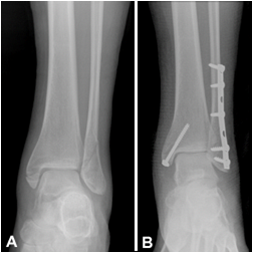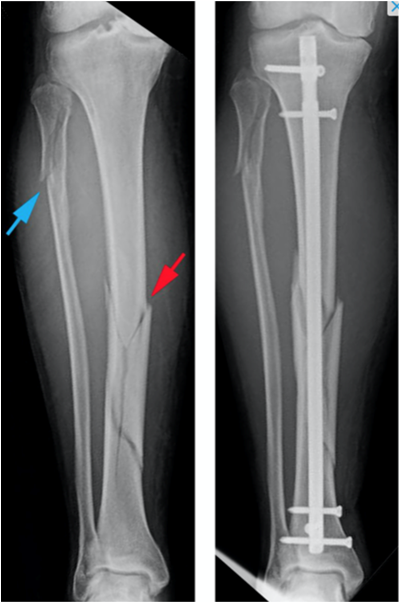This provides you and your family with general guidance on how to care for your back following spinal surgery. It will concentrate on providing you with information on physiotherapy and what to expect following your surgery.
Most questions should be covered here however it does not replace discussion between you and your physiotherapist or surgeon.
The success of your operation is a team effort including doctors, nurses, physiotherapist, occupational, your family and most importantly you.
Immediately after surgery
This is a placeholder tab content. It is important to have the necessary information in the block, but at this stage, it is just a placeholder to help you visualise how the content is displayed. Feel free to edit this with your actual content.
Pain Management
You will have some pain following your operation. Due to the wound and swelling around the nerves, you may also experience leg pain, but this is expected to settle within 6 weeks as the swelling subsides. A degree of pain is normal at this stage as the healing process starts. It is important you inform the nursing staff if your pain is increasing so we can help you manage this. Controlling your pain not only helps you move, and sleep better but also aids in your overall well-being. The anaesthetist and ward staff will discuss pain relief options with you, and a pain management nurse may visit you after the operation. It is important not to suddenly stop your painkillers but to gradually reduce your dosage. If pain or swelling significantly increases, please contact your physiotherapist, GP, orthopaedic clinic, or attend your local minor injuries clinic for advice. For details, see the information at the end of the booklet. It is worth noting that the primary goal of the surgery is to relieve leg symptoms. While you may not experience immediate relief from your back pain, as your pain gradually decreases and mobility improves, we hope to see an improvement.
Physiotherapy
We will aim to get you up after you have recovered from the anaesthetic, this can be on the same day as your operation, and it will likely be a Physiotherapist who will assist you. We will check your sensation and movement before showing you the correct way to get up out of the bed. We will then help you to start walking and if necessary, provide you with a walking aid to help you walk until you are independent. It is common to still have attachments such as a drip or catheter after surgery, but this will not prevent you from mobilising. Once you are independent walking, with or without a walking aid, you will be shown how to go up and down the stairs if you are required to do this at home. You will be taught exercises to increase the movement and strength of your back. This will ensure you get the best outcome out of your surgery. It will help if you start these exercises straight away although there may be some circumstances where your consultant does not want you to start exercises straight after your operation. If this is the case, then your physiotherapist will advise you. If you decide to take up the offer of Physiotherapy, your Physiotherapist will likely encourage you to continue progressing your exercises and walking while addressing any concerns you may have. You are likely to feel that your pain and function are already improving at this stage and may require very minimal input from our service. Physiotherapy input can vary depending on your pain, function and confidence levels. Physiotherapy will involve guiding you through and advancing your post op exercises to improve your overall function and address any concerns you may have during this period. Every person is different therefore your recovery may take longer or shorter than the timescales recommended. The most important thing is that you are improving and trying to move and do more each week.
Return to daily living
With all activities you should use your common sense and listen to your body. Mild aches after a new activity are acceptable but severe pain is not.
Improvements can continue for 18 months with the current evidence showing that a more active approach in your rehabilitation will have better outcomes.
Walking
It is important to keep moving after your surgery. Regular walking is highly encouraged as it plays a crucial role in aiding your recovery and overall function. Especially within the initial 6 weeks, it is advisable to gradually increase both the distance and pace of your walks as your pain allows, taking care not to worsen any discomfort. While there is no strict limit on the distance you can walk, starting slowly and gradually on even surfaces may provide greater comfort.
Sitting
You should gradually build up sitting during activities like eating or relaxing and this should be guided by your pain. Limit sitting to 15 minutes for the first few days after your surgery and once you are comfortable you can start to build this time up.
Work
You will need to be off work for between 2-6 weeks depending on your job. If your job involves heavier or more manual tasks, you may be advised to remain off work for up to 12 weeks This will vary from person to person and your surgeon will advise you about your individual case. It is also sensible to discuss with your employer if you can return to light duties initially or reduced hours, making sure that you can regularly move about. The hospital can give you a fit note (used to be known as a sick note) if necessary.
Driving
We do not recommend sitting for extended periods after your surgery, including driving. However, if you have no altered sensation or weakness in your legs, you may resume driving when you feel confident and safe to do so. Generally, we advise waiting a minimum of 2 weeks before driving, although this could be extended to 4 weeks depending on factors such as pain levels, the need for pain relief medication, and the ability to safely perform an emergency stop. If you do require to drive longer distances, ensure you take regular breaks to stretch your legs. Before leaving the hospital, please discuss driving with your surgeon and remember to check with your insurance company.
Early Stage Exercises (0-4 weeks)
Static Abdominals
Static Glutes
Prone Lying
Knee Hugs
Sit to Stand
Intermediate Stage (4-8 weeks)
Gradually increase walking tolerance slowly and incrementally. Generally, walk for 10-15 minutes and gradually increase as you feel comfortable. Monitoring your step count can be a helpful guide with this. You can also begin to add in these exercises which will help with regaining your movement and strength. You may feel some pain at your back while doing these exercises however it should settle back down to normal within 15 minutes of completion. Use your own pain and function as a guide however we would recommend doing between 8-12 repetitions of each exercise 2-3 times per day
Range of Movement (ROM) exercises
Flexion in lying (knees to chest)
Extension in lying
Childs pose
Flexion in sitting
Slouch overcorrect
Spinal flexion/extension in 4-point kneeling
Neuro mobility
- Neural flossing in lying with hip and knee at 90 degrees – straighten leg until tension is felt – do both legs, one at a time – operated and non-operated.
- Can progress this same exercise to sitting as able.
Strengthening exercises
Glute Bridge
Can progress onto single leg once you can do about 20 reps comfortably
Sit to stand/half squat to a bench
Bird dog/Superman’s
Dead bug
Advanced/ later stage exercises
Continue with intermediate ROM exercises and aim to try and increase your flexibility particularly with movements that still feels tight or restricted.
You should continue to work on your strengthening exercises and as time progresses and your symptoms allow, you can continue to challenge yourself with these exercises by either increasing the frequency, speed, repetitions or adding an additional weight/resistance band..
Sports and Hobbies
Gentle low impact and non-contact sports can start at 4-6 weeks, e.g. – cycling and swimming.
Contact sports should be avoided at first but, you can get back to them after 10-12 weeks however it is sensible to be undertaking other types of exercises such as walking, cycling, and gym work before returning to contact sports. If you need specific guidance and advice on returning to your preferred sport, your physiotherapist can guide you.
You can return to jogging around 10 weeks and it is advisable to gradually build up your time and distance. It is also never too late to start, and jogging/running has so many beneficial health benefits you may wish to look at the NHS Couch to 5k App for a more specific training plan. Get running with Couch to 5K – NHS
As your function improves remember the UK Government guidelines for physical activity levels:
Physical activity for adults and older adults (publishing.service.gov.uk)
Some people will notice improvements immediately after surgery and others will be feeling much better by around 6 weeks. However, everyone is different, and improvements can continue for 18 months with the current evidence showing that a more active approach in your rehabilitation will have better outcomes.
Contact Information
In an emergency
In an emergency go immediately to your nearest Accident and Emergency (Take your GP letter, procedure information sheet and any tablets issued by Day Surgery).
If you have any further queries regarding your operation, please contact the Day Surgery Unit where you had your operation. Queen Elizabeth University Hospital (Ward 10A/10B/10C/ 10D) 0141 452 2700 8.00am – 7.00pm Monday to Friday Out with these hours, if further help or advice is required, contact NHS 24 Telephone No: 111.
If you have any concerns regarding your physical recovery within the first 4 weeks, please contact the physiotherapy team on 0141 452 3713 (Monday – Friday, 8.30am – 4.30pm). Out with this 4-week period, please discuss with your musculoskeletal physiotherapist.












































